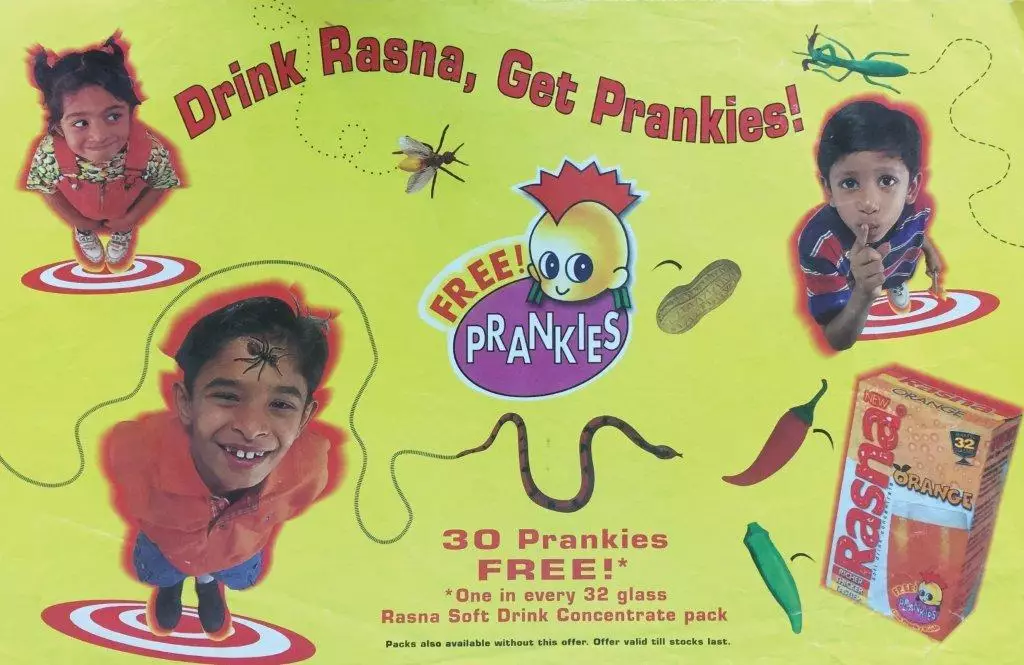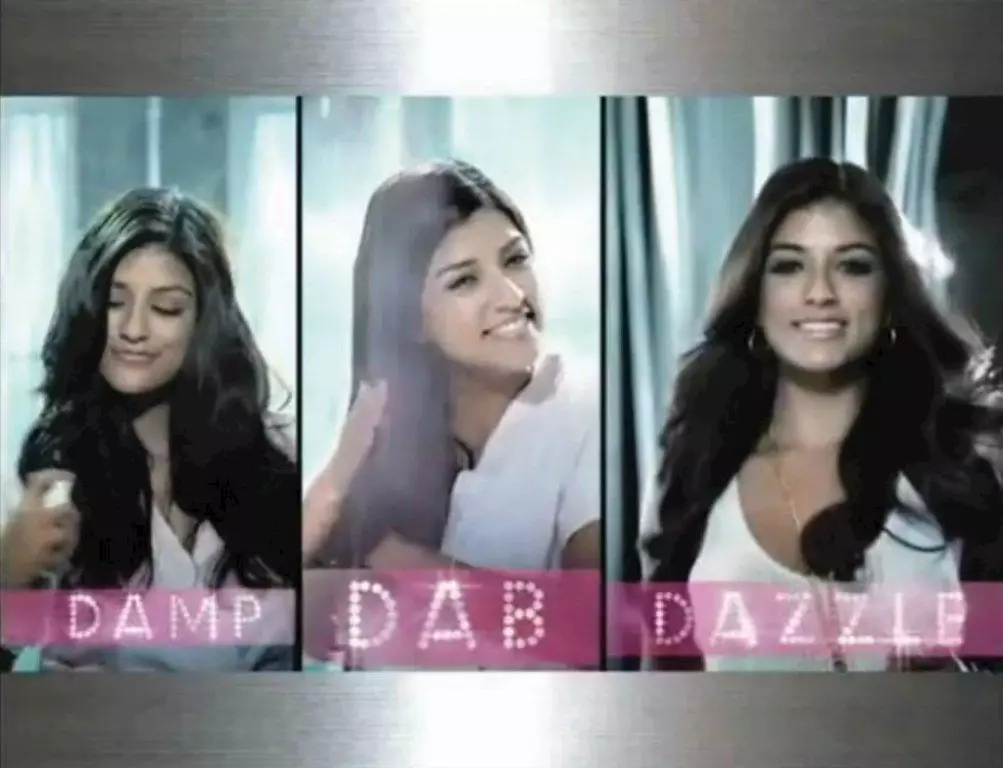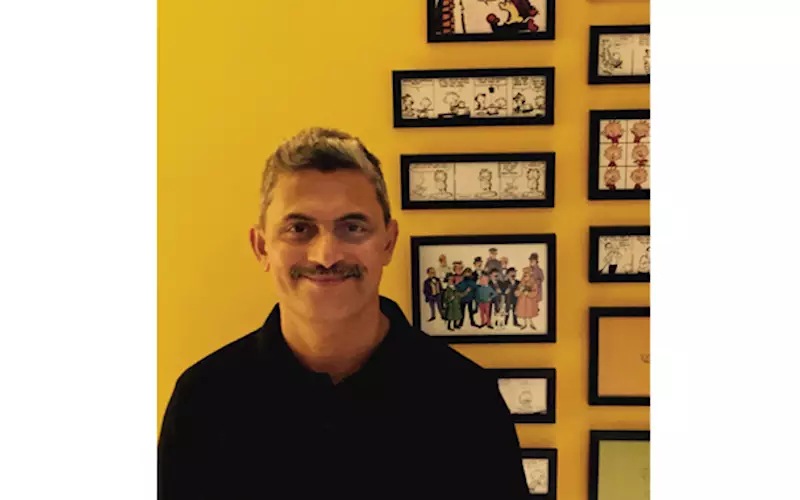Jagdish Acharya: Hierarchy and structures don’t mean much in a creative environment
PrintWeek India talks to the founder and creative head of the boutique creative agency Cut The Crap about his agency’s trajectory so far. CTC has also recently forayed into the design space with its new outfit Design Sell.
10 Jan 2017 | By Payal Khandelwal
‘Crap’ in Cut The Crap (CTC) refers to hierarchies and structures, giving importance to the quantity over quality of creative output, and not letting creatives find their own rhythm to work with, among other things. CTC seeks to, well, cut out all this crap from their work set up.
CTC’s founder and creative head Jagdish Acharya started his career in marketing and was instrumental in launching the cosmetic division of Cadila – Everyuth. Post that, he worked with DDB Mudra for 15 consecutive years. While he worked with a wide range of brands at Mudra, and in both strategic and creative functions, his most well-known and loved campaign is the Dhara ‘Jalebi’ commercial. In 2009, he started CTC when an unexpected account fell into his lap.
Cut The Crap has so far worked with brands like Livon Serum (Marico), Heritage Agarbathy (Cycle), Taj Cement, Iba – a range of Halal Cosmetics, Ecotrail personal care, Athena Lifesciences, Hills Cement, Hypoxi India, Rasna, etc. The agency has recently also announced the launch of its design unit called Design Sell.
We speak to Acharya about his professional journey so far. Edited excerpts:
PrintWeek India (PWI): You worked at Mudra for almost 15 years and then started your own shop. What happened towards the end that triggered this move?
Jagdish Acharya (JA): You have to go back a bit further to understand the move. During my time in Mudra, I had made a shift from account management to creative and that too quite late in my career. I realised that I could wear two hats – of creativity and strategy – quite easily. And when I wore only one hat, I wasn’t able to get the best out of me. Eventually, I also figured that unless I was on my own, I won’t be able to do justice to both the functions.
And to match my mood at that time, I got an interesting opportunity from a group called Republic of Chicken. They weren’t too happy with their agency (McCann Erickson) at that time and a friend of mine who was on the account called me over a weekend to meet the client and to just give my overview on the brand. Only a few minutes into the meeting, the client said that he wanted me to handle his account, and that he would help me with anything I needed to get started on my own. I latched onto that opportunity instantly, spoke to a few of colleagues at Mudra, and that’s how the agency came into being.
PWI: Were there any initial concerns though?
JA: The concerns came in a bit later actually. We first started the work and then registered the agency. After the initial excitement and the rush of creating the work, we realised that we were operating in a challenging environment (recession time). However, we decided to go ahead and created a unique approach and positioning for ourselves. In fact, due to their internal brand developments, Republic of Chicken was only with us for about two months. It was as if it was my destiny to have met them and start CTC.
PWI: What have been some of the biggest career highlights for you while you were at Mudra?
JA: I joined Mudra after working in marketing and therefore I lacked any knowledge about operations. And at that time, operation was the king. The only way I could survive in advertising was by getting my clients’ respect so I applied myself to the client and planning side. And that’s how I grew in Mudra.
All my achievements there were related to brand work. I was responsible, for example, for shifting Sugar Free from diabetes to lifestyle category. Then we did a lot of work for Symphony. And somewhere along the way, my strategy and creative sides started merging. That’s when Dhara ‘Jalebi’ campaign happened, followed by ‘My Daddy Strongest’. Then we did a highly successful campaign for Rasna International which was the first ever ad campaign featuring Paresh Rawal. We also did a unique promo for Rasna called ‘Prankie’ to change Rasna’s image of being a “cute” brand to something slightly bratty.

After this, I moved over to creative completely. The biggest achievement then was this activation for a sari brand in Tamil Nadu. The challenge was that the brand was a late entrant to the market and people thought that it didn’t have enough colour options in saris. Together with the client, we came up with an exclusive hand-woven sari which had as many as 50,000 colours. We did an activation around it with Tamil film actress Jyothika. The biggest gossip around that time in the media was if she would get married to her co-star Surya. The radio activation was about what would be the colour of her sari at her “upcoming” wedding. Finally, the reveal happened on TV and it worked really well for the brand.
Then I branded Paragon range of leather chappals as “office chappals” for traders, shopkeepers, etc. in tier 2-3 cities, and the brand still uses that positioning. For Prestige, I led the brand’s foray into various appliances other than pressure cookers which they are mainly known for.
PWI: And what were the learnings?
JA: The key learning was that the more you set people’s minds free, the greater productivity they will have. Advertising is ultimately a people’s business, and you have to take care of your people and help them evolve with time.
Also, I believe that there is a nothing called “the best talent”. It’s more about improving the mindspace of people by removing a lot of unnecessary things.
Hierarchy and structures don’t mean much in a creative environment. Most of the delays, failures or average work doesn’t happen because of the lack of talent. It is because of these things. And this could be a micro-culture in a group or a macro-culture in the agency.
I remember there was a woman in Mudra Ahmedabad who was on the verge of getting fired. She ended up coming over to my account, and once she started working in my team, she was highly productive. She even won quite a few awards next year for the work she did that time. It was because of the space she got to perform.
PWI: Around the time of the launch, you had said that in CTC, creatives will directly deal with the clients. Do you think that in today’s day and age, it’s become important to blur the boundaries between strategic and creative functions in advertising?
JA: Absolutely. Like I said, the structure has no relevance anymore. Given the kind of environment we have today, it is important to blur these boundaries. In earlier days, client servicing’s role was only to handle operations in the agency. Then there used to be this huge entity called the art studio. In the digital age, things and requirements have changed completely. Clients want to direct talk to the creative. Each person is responsible for his or her own operation and output.
You just need different set of skills. It’s not like that we have only creative people at CTC. We do have someone who does account and brand management. But her job is not to do just operations, it’s also strategic thinking and to align the client with the agency in the process.
It’s basically all very fluid now. It’s not just about functions though, we also work on a deliverable basis at CTC. People’s performance is not judged by the number of hours they clock in. We believe in two things – every creative person needs his/her own time and space to deliver and all interaction between the team members should happen without any ego. So we have a senior creative director whose most productive time is 5 am in the morning and that’s when she works for a few hours from home. She also has a kid to take care of, so she comes in only at 3 pm. Then we have a copywriter who never sees the morning sun but likes to work till midnight. So for each person, we have tailor-made this. However, all of my team members are always accessible and they also allocate some time for teamwork.
PWI: You work with a lot of start-ups/smaller brands with CTC. What are some of the advantages of working with start-ups?
JA: The unique challenges that come with the start-up brands are what attract us to them. If you see our portfolio, you will notice that we have taken brands which are to be launched, or are staggering as brands, or have no money to spend on marketing, or there is a challenge with the category (like in Livon, where people had stopped using serums completely), etc. When we are able to identify the challenge, it really motivates us.

Another greatest advantage with start-ups is the ability to set up new systems. We anyways believe that brand guidelines shouldn’t be written in stone. They should change according to the brand and not vice versa.
PWI: Tell us a bit more about your work on Iba, the range of halal cosmetics. It’s a new category in India. What have been some of the challenges and insights so far?
JA: Halal actually means whatever is “permitted” in the Muslim world. There is halal tourism worldwide. And halal cosmetics is a boutique development in the Muslim world, usually started by one Muslim woman, priced at a premium, and meant for those who believe in it.
While India has the third largest population of Muslims, majority are in the middle or low end. We had to keep that in mind. Also, in a region like Asia, many things are sold under the pretense of religion and not with a health positioning, and that’s something we wanted to steer clear from. We wanted to approach the brand in a scientific, non-religious way. Today, 30% of the consumers of the brand are not Muslims.
Another thing we kept in mind was the empowerment of the Muslim women in India. On the face of it, halal is something they are supposed to use as part of their religion. However, when we spoke to Muslim women during our research, most of them said that they are anyways a minority within a minority and they would prefer something that doesn’t impose rules and restrictions on them. Choosing a brand of cosmetics should be their choice, and not a compulsion. And this is how we approached the brand work.
PWI: Why did you decide to launch a new design unit?
JA: We always take on projects where we are the primary brand driver. Even if there are other agencies involved, we want to hold the nerve centre of the brand. But we have been getting a lot of enquiries about purely design led work. And the only way we could take up such work and do justice to it was to create a separate entity for it. Our creative director (art) Renuka DeSilva is leading that function.
Our approach will be different at Design Sell where we will only take up design oriented projects. Like we just finished work for a leading Australian décor brand which had no budget to do a full-fledged launch here, but wanted to create a niche for themselves in the Indian market through their packaging.
PWI: What are some of CTC’s plans for the next year?
JA: We might move to a slightly bigger space. We also want to expand our team, but quite carefully. We are a hub and spoke model which we wish to retain. We just won the FCUK innerwear account so the work will start on that soon. Apart from that, we want to gain expertise in categories like design and fashion. And lastly, we also want to invest in our people.
PWI: Do you have any dream category that you wish to work on next year?
JA: There is no dream category as such. However, I do wish to work with a completely techie, consumer facing brand. Something which is today’s brainchild.
Ten favourite print things
“My 10 print imprints (not in any particular order)
1. Story by Robert McKee
2. Tock-Tick ad for Oil Of Olay Wrinkle Smoothening Cream
3. Rasna poster for ‘Prankies’ - not because the promo was a hit but because it featured my daughter
4. The Man From St Petersburg by Ken Follett
5. Tintin
6. The yellow palm-book of Hanuman Chalisa that was everywhere in Banaras, town of my early years
7. Calvin and Hobbes
8. My Last Sigh by Luis Bunuel
9. Marudhara Ka Megh (Cloud of the desert) - a book on GD Birla that I happened to read while traveling by train through Rajasthan
10. Xcellon Institute – my first print ad for my agency











 See All
See All